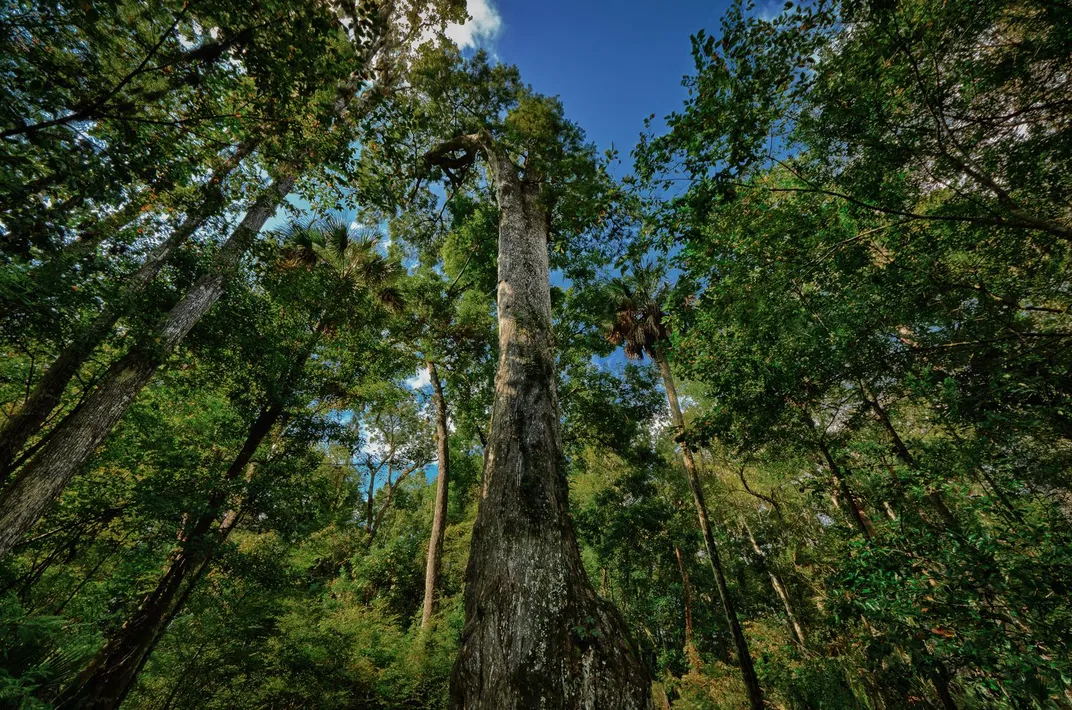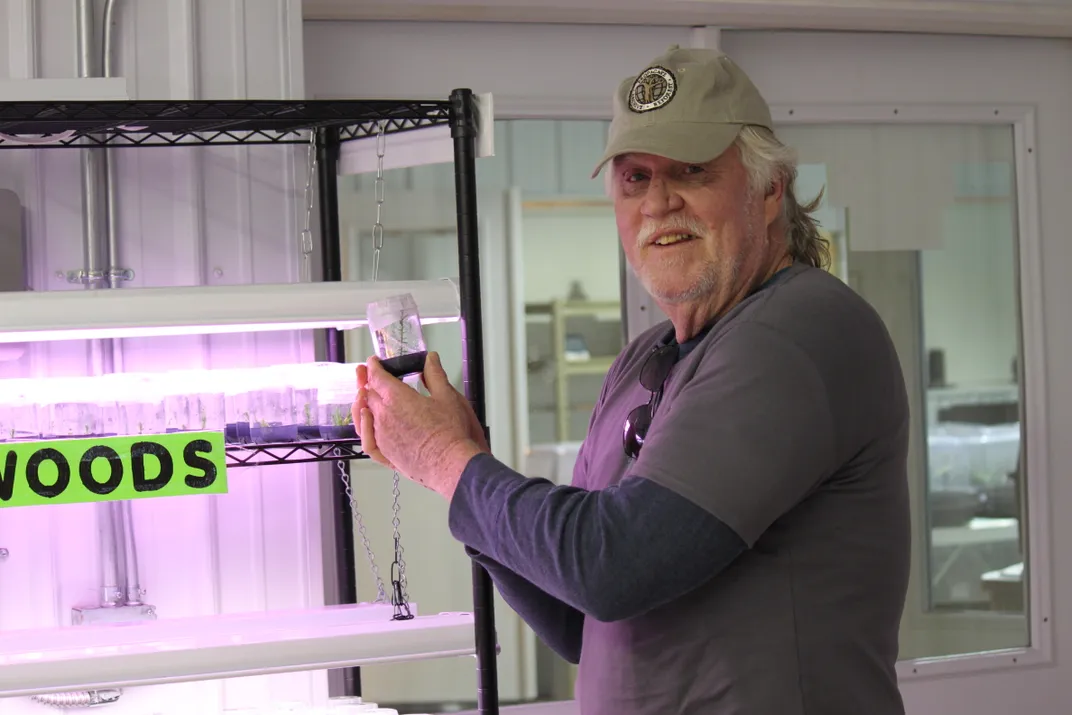The Race to Save the World’s Great Trees By Cloning Them
A nonprofit dedicated to preserving old, iconic trees is cloning them in hopes of preserving them for the future
/https://tf-cmsv2-smithsonianmag-media.s3.amazonaws.com/filer/e5/a6/e5a65969-e8bb-4bdb-9e5d-456730a85cb2/img_0656.jpg)
It isn’t hard to find the big tree they call Lady Liberty in Florida. It stands at the end of a boardwalk about 16 miles north of Orlando, along with many gums, oaks and magnolias in the middle of a small public park.
What is hard is photographing the living landmark: At 89 feet tall, Lady Liberty is much smaller than some champion trees but still gigantic by most standards, making it a big draw for tourists who come to see what a 2,000-year-old tree looks like. It is impossible to capture the entire massive trunk and gnarled branches in a single frame, although many visitors try—lying on the ground below with cameras pointed skyward.
This December, the Archangel Tree Archive will pay a visit to Big Tree Park as well, hoping to gather some young shoots from Lady Liberty’s branches to clone the massive cypress. The non-profit specializes in collecting and storing the genetic material of iconic old trees and then seeking appropriate places to replant the resulting clones, in an effort to preserve them for future generations. Experts estimate that less than 10 percent of the old growth forest in the U.S. is still standing. Some stands of the oldest trees are now threatened by logging and development.
Or worse. For years the majestic Lady Liberty was overshadowed by the Senator, another bald cypress that used to grow in this same Seminole County park. The Senator had once reached a height of 165 feet. Postcards from the 1920s show groups of people trying, unsuccessfully, to hold hands and encircle the tree’s massive 12-foot-wide trunk. Experts estimated that the giant tree was more than 3,500 years old.
When the Senator burned to the ground three years ago, the managers of Big Tree Park received more than 1,000 emails and phone calls from people all over the world expressing sadness and outrage.
“I had parents who recalled going to see the Senator with their grandparents, and their grandparents had been there with their grandparents,” says Jim Duby, program manager for Seminole County. What had seemed indomitable was suddenly gone, and a personal connection people felt to the past was severed. The tragedy also inspired in some people a renewed appreciation for the trees that remained, including some volunteers at the park who asked about protecting and researching Lady Liberty.
Enter Archangel. Previous projects have taken Archangel scientists to the tops of California’s redwoods and the depths of old-growth forests in England. They are often called in to clone trees growing near historic homes, including places such as George Washington’s Mount Vernon and Thomas Jefferson’s Monticello.
Archangel’s lead propagator, Jake Milarch, says his staff and a group of scientific advisors have identified a list of approximately 100 iconic trees around the world that should be cloned.
“We go for the biggest trees, because those are the ones that have survived,” he says, arguing that their genetics likely played a big part in that longevity.

Not everyone is convinced that cloning big old trees is always worthwhile. Some critics point out that conservation work should ideally seek to protect more than lone specimens, pushing instead to save valuable parcels of land and their embedded habitats to protect the health of the entire ecosystem. Others worry that cloning could potentially create a dangerously vulnerable monoculture if locations for the new trees are not selected carefully and tracked regularly.
“I think it’s a wonderful idea. I think to preserve those species that have stood the test of time is necessary. But it’s not sufficient,” says Charles Maynard, director of the American Chestnut Research and Restoration Center in New York. His own group has spent decades researching the genetics of chestnut trees and the possible ways blight-resistant strains of those trees could be realistically reintroduced into forests.
The environment where those trees once grew as seedlings has changed, Maynard notes, and what might have grown well there centuries ago might not grow as well today. You also need to preserve diversity to increase the odds that the resulting new trees are resilient, he says. That means collecting samples from at least 50 to 100 trees to ensure long-term survival of each species.
But Maynard likes the idea that the cloned trees are being planted, even if they are in places slightly different than where they were gathered. “Just a couple of old trees stuck in a test tube aren’t going to do much for you,” he says.

Andrew Eckert, a tree biologist from Virginia Commonwealth University, cautions that not all iconic trees survived due to superior genetics. Some may have just been lucky. On the other hand, he thinks there’s great value in planting the clones to be able to continue studying large trees after the original has died. Even when the clones are only a few inches tall, they are genetically identical to the parent plant.
“I would bet that these would be the trees to study to understand climate oscillations,” Eckert says. They may provide lots of information on how some species will adapt to global climate change.
Seminole County officials still feel that cloning Lady Liberty is the right move. (The Senator had already been cloned by a different group almost 20 years ago, and in 2013 the county spent $14,000 to buy two clones and replant them nearby.)
“Given what happened three years ago to the Senator,” Duby from Seminole County notes, “I think we’d be kicking ourselves if, God forbid, something similarly tragic happened to Lady Liberty and we hadn’t done the cloning.”
/https://tf-cmsv2-smithsonianmag-media.s3.amazonaws.com/accounts/headshot/gillespie.jpeg)
/https://tf-cmsv2-smithsonianmag-media.s3.amazonaws.com/accounts/headshot/gillespie.jpeg)